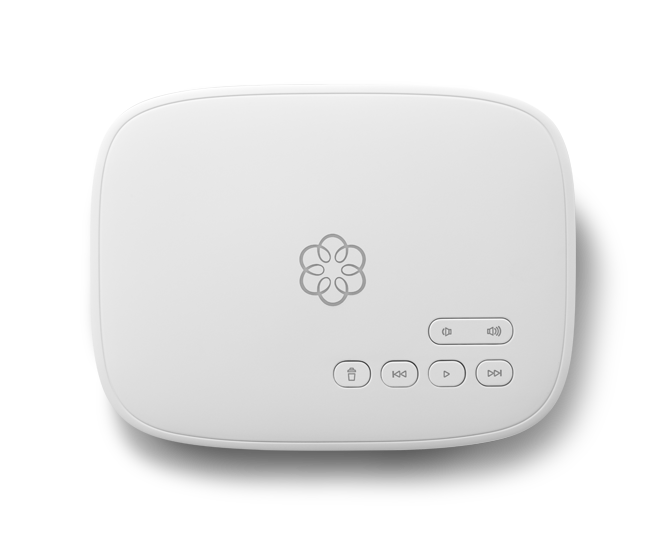Useful Terms -- Identifying Your Equipemnt
To install the Ooma system, you must be able to identify and locate the following network devices and services: your high-speed Internet connection, your modem, your router, and your phone system.
- The Internet Connection
- The Modem
- The Router
- Integrated Routers
- The Phone System
- Splitters
- Single-Line (Duplex) Splitters
- Two-Line Splitters
- Dual-Jack Wall Plates
The Internet Connection
Your high-speed Internet connection is most likely provided by a Digital Subscriber Line (DSL), cable, or a fiber-optic connection. Either way, there will be a connection between the wall and your modem. Look for a wall plate or cable that looks like one of these:
- Cable modems are connected with the same cable that connects to your cable TV.
- DSL connector cables are similar to the existing cables that connect your phone to the wall. The connector looks like a standard phone cable.
- Fiber-optic Internet connections are typically delivered into the home as an Ethernet connection.
The Modem
You can identify your modem by its labeling or connections. First, look for a device that has the word “modem” on its product label. If this doesn’t help, you can identify your modem by its connections. Look for a device that connects to the wall, either by a DSL cable, a TV cable, or an Ethernet cable, with a single network connection to your computer or router.
Sometimes the modem and the router are combined into one device, which is called an integrated router. These look like modems, but have more than one network connection, and may have wireless capability. If your modem has an antenna or has a Wi-Fi label on it, it’s probably an integrated router.
The Router
If you have just one computer in your house, the computer may be connected directly to your modem by a cable. In this case, you do not have a router.
If you have multiple computers in your home, or if you have wireless Internet access, you have a router. A router splits the Internet connection into multiple connections, or ports, for your computers to connect to. Most routers have four (sometimes more) Ethernet ports on the back panel. Routers can connect directly to computers with a cable, or indirectly through a wireless connection. If your router makes wireless connections, it may have an external antenna. To find your router, look for a device that has one Ethernet connection to your modem, and multiple connections to your computers or has an antenna.
Integrated Routers
In some cases, the modem, router, and wireless transmitter are all combined into a single integrated device. In this case, you will have a single device with one connection to the DSL or cable wall jack and either cabled connections to your computers, wireless connections through an antenna, or a combination of both.
The Phone System
Identifying your phone system is the easiest part. If you have more than one line or phone number in your home, you need to determine which wall jacks work with which number to ensure all your ooma devices are installed on the same phone line (the line which you registered your ooma system). If you have more than one line, you will have either two-line splitters or dual-jack wall plates that allow you to connect to different phone numbers.
Splitters
Telephone splitters are small devices that plug into a telephone wall plate and split that jack connection into two jacks. There are three kinds of telephone line splitters you might find in your home, single-line splitters, two-line splitters, and dual-jack wall plates.
Single-Line (Duplex) Splitters
If you have separate answering machines or fax machines and want to use them on the same phone jack as your phone line, a duplex or single-line splitter is typically used. A duplex splitter divides a single phone line between two new jacks. Devices that are plugged into a duplex splitter share the same line and phone number. The splitter provided by ooma is a duplex splitter and is used to divide and share your line between your DSL modem (if applicable) and the ooma device.
Two-Line Splitters
Some homes with more than one phone number have wiring that combines both lines into one jack. With these jacks, a splitter divides the single jack into two jacks, one for line one and the other for line two. This is called a two-line splitter. Phones plugged into the two-line splitter will have different lines and different phone numbers. If you have a two-line splitter, make sure you install the ooma device between the phone and the splitter jack, instead of between the phone and wall plate. Be sure that your ooma devices are all plugged into the same line (with the same phone number).
Dual-Jack Wall Plates
Phone wall plates come in one and two, or dual-jack configurations:
Wall plates with dual jacks are basically splitters built into your wall. They can be single-line splitters (duplex) or two-line splitters. If you have a dual-jack plate with two lines, make sure you install all your ooma devices on the same phone jack. Your ooma device needs to be plugged into the same line (with the same phone number).

